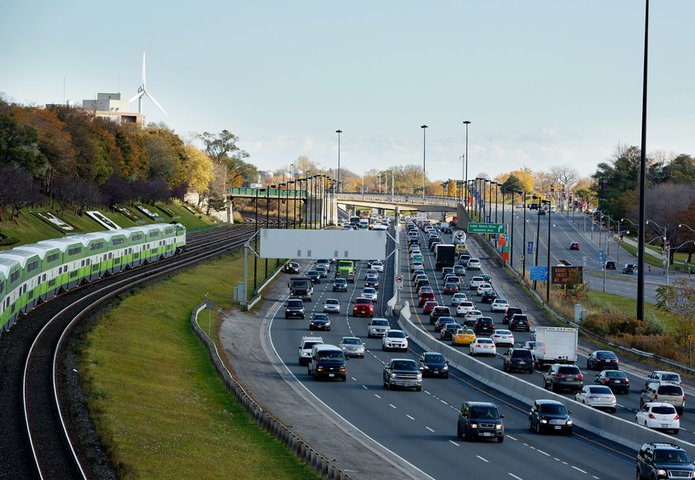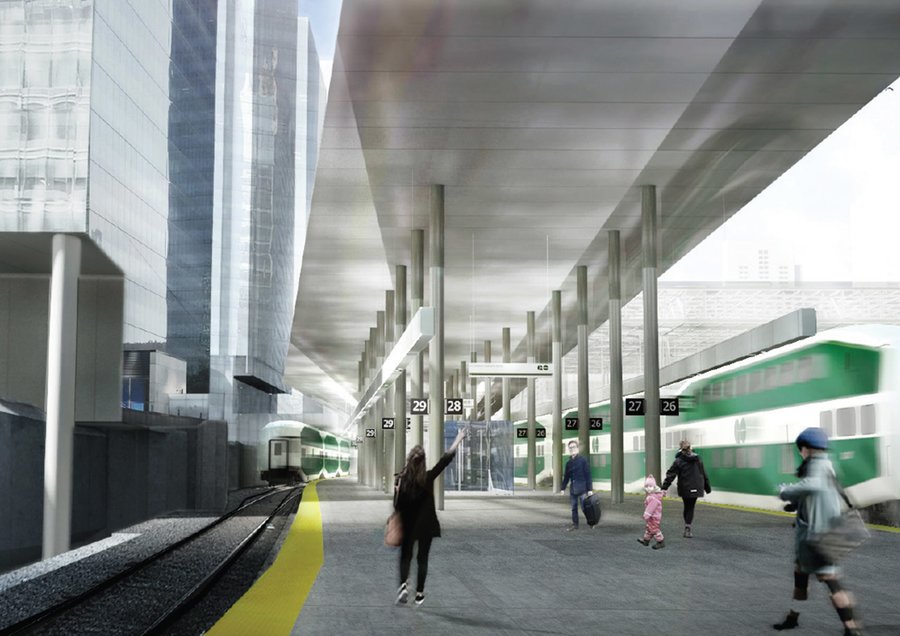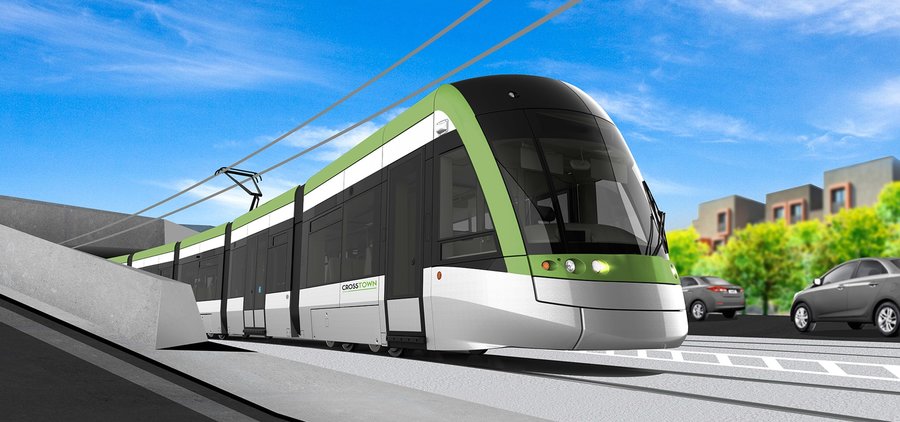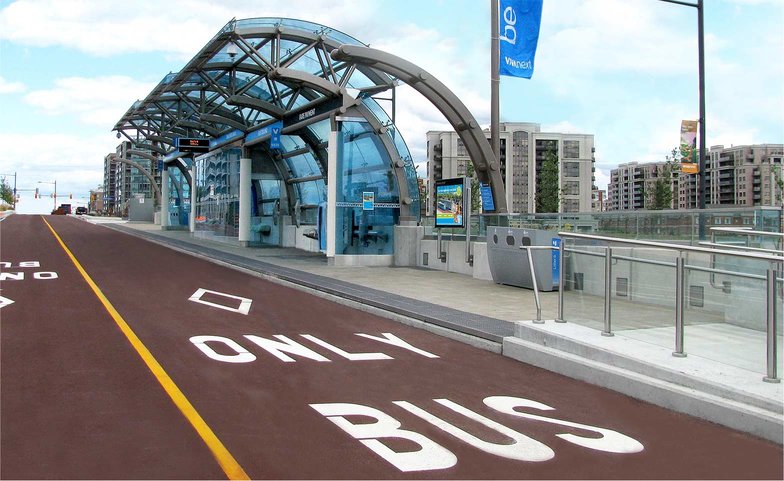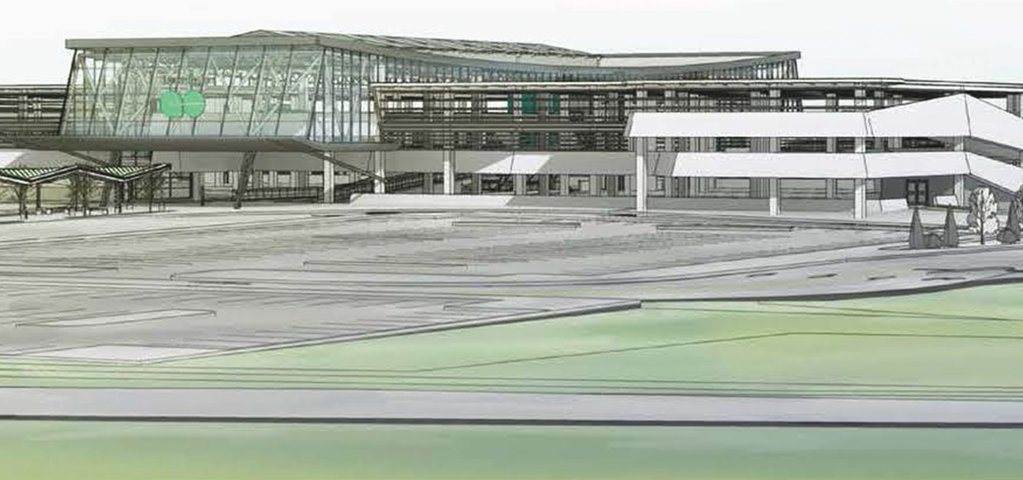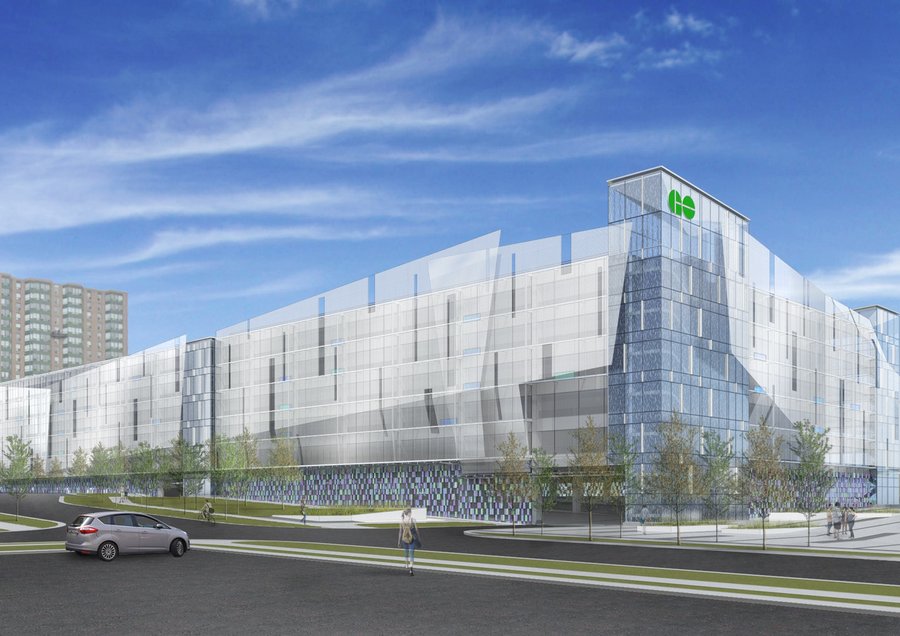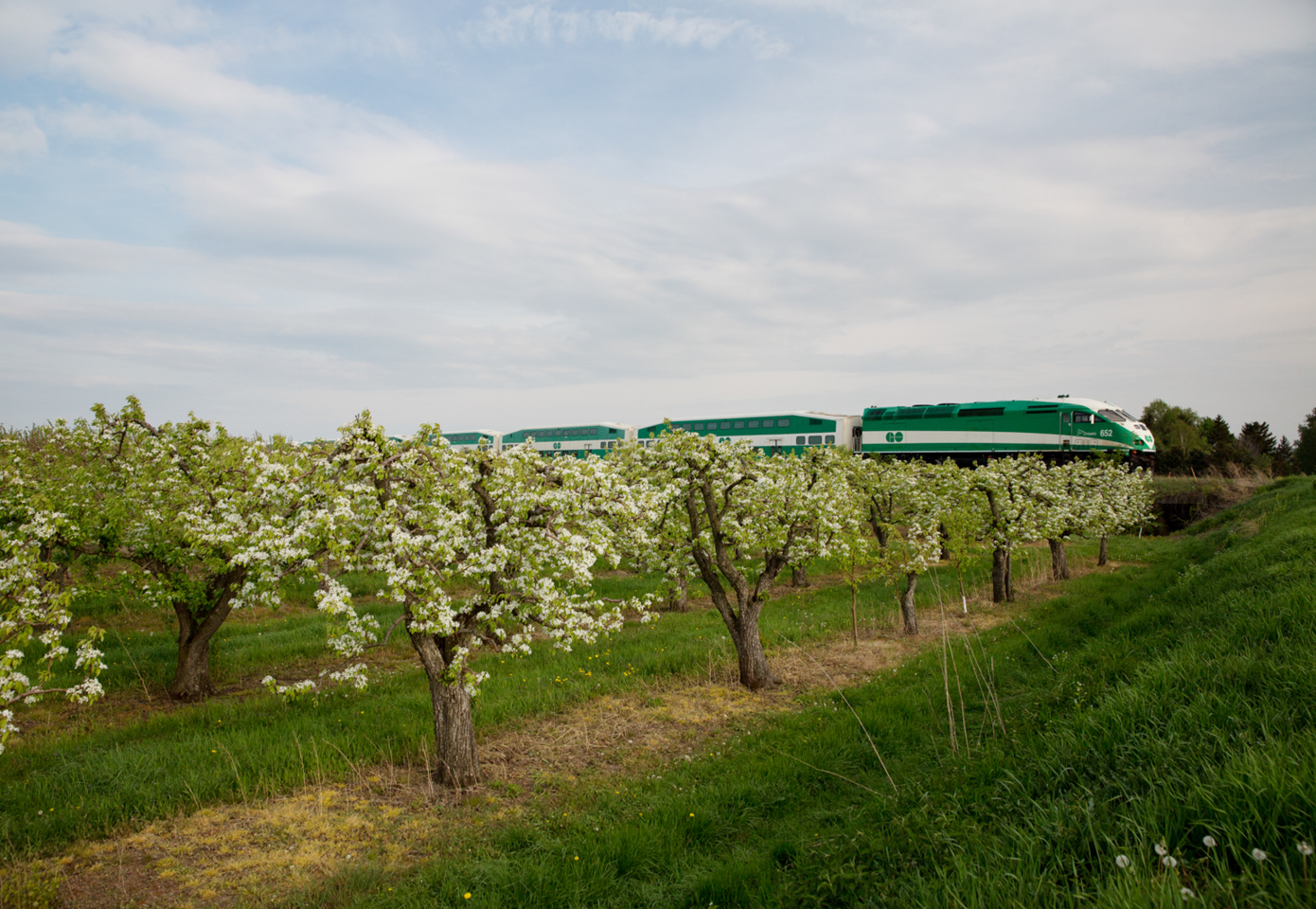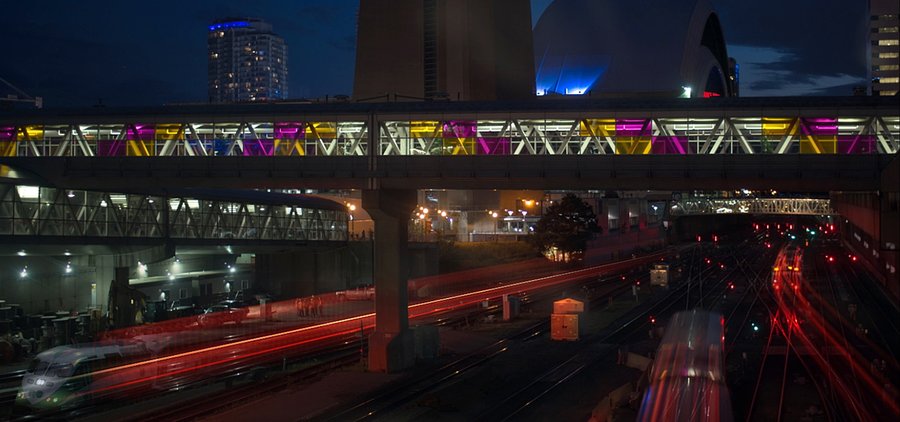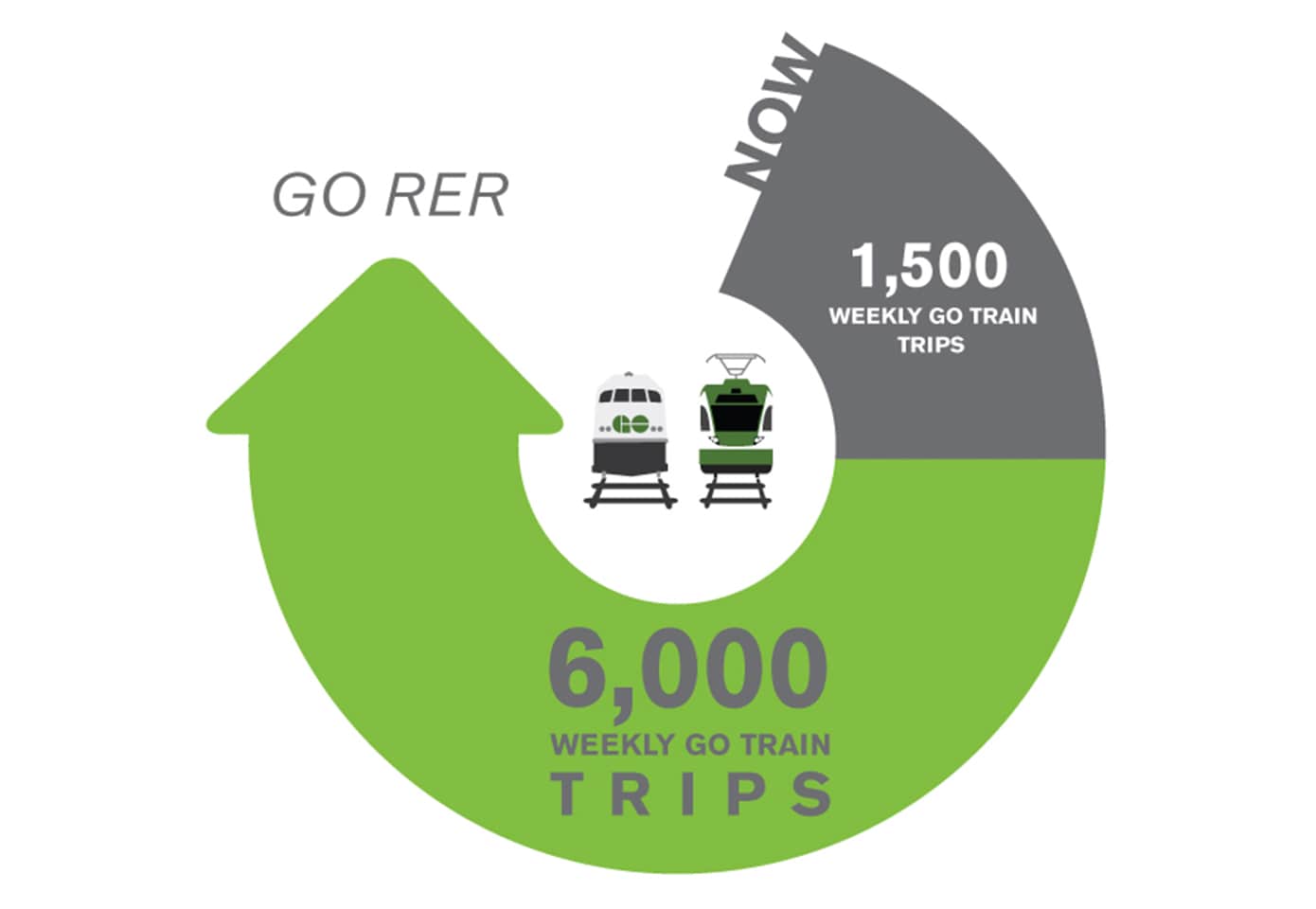
GO by the numbers
On a typical weekday, GO runs 272 train trips that accommodate 217,000 boarding’s and 2,318 bus trips that accommodate 67,000 boardings. When you add up the numbers, you're looking at approximately 268,000 passengers travelling through the GO system on any given weekday. And those numbers are set to grow dramatically through our plans to expand and improve GO service.
